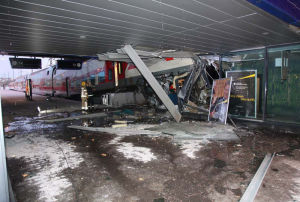Charlotte Personal Injury Attorney Matthew R. Arnold of Arnold & Smith, PLLC answers the question “Are the laws or rules applying to a wrongful death claim different from a personal injury not involving death?”
This may sound like a simple question, but did the person you want to sue cause your injuries? If so, were your injuries a reasonably foreseeable result of the person’s actions?

The issue of causation can lead personal injury litigants and their lawyers into a labyrinthine maze of legal concepts fit for a law school-level philosophy course. While the issues and doctrines that accompany causation and so-called “foreseeability” may be complex, the practical day-to-day application of these principles mean the difference in who wins and who loses in personal injury lawsuits.
In many cases, causation and foreseeability are not issues of contention. An analysis of a recent Australian case shows how the issues can arise, however, even in cases involving relatively straightforward facts.
A driver’s negligence caused a motor-vehicle accident. A person injured his neck in the accident. Several witnesses testified regarding the driver’s negligence and a police officer concluded the driver was at fault. The issue of whether the driver caused the person’s whiplash injury was uncontested.
As time passed, however, the person’s symptoms worsened, and impingement of nerves in his cervical spine led to the recommendation that he undergo spinal fusion surgery. Six days after surgery, the person died. The cause of death was “aspiration of vomit associated with focal coronary arteriosclerosis with thrombosis and combined drug effect.”
In other words, before the accident, the injured person’s arteries had become clogged such that—coupled with further arterial clotting after surgery, the effect of anesthetics, and suffocation due to entry of vomit into the person’s lungs—he was not well disposed to survive the procedure.
The man’s wife sued the driver, alleging that the man’s death was the consequence of injuries he sustained in the motor-vehicle accident.
The driver challenged the suit, arguing that the man’s preexisting medical conditions broke the chain of causation between the accident and the man’s death, such that these conditions caused the man’s death, not the motor-vehicle accident.
The judge in the case disagreed, finding that the driver’s negligence “materially contributed” to the man’s death. It was foreseeable, the judge found, at the time of the accident, that the injured person might require surgery in order to treat his neck injury.
While the injured person was afflicted with certain preexisting medical conditions that may have rendered him unlikely to survive the fusion surgery, the judge applied another well-known legal principle, holding that the driver took his victim as he found him, and was responsible for the man’s death.
In the United States, courts are guided on the issues of causation and foreseeability by a well-known 1928 decision from the Court of Appeals of New York State. In that case, Helen Palsgraf was standing on a train platform waiting for a train. A man carrying a parcel of fireworks ran to catch a departing train and was assisted onto the train by a platform guard.
As the man alighted the train, the parcel fell, causing the fireworks to explode. The explosion caused the awning above Ms. Palsgraf to fall on her, injuring her. Ms. Palsgraf sued the railroad, arguing that the negligence of the guard in assisting the man with the parcel led to her injury.
Famed jurist Benjamin Cardozo wrote an opinion finding that it was not foreseeable that the act of assisting a man with a parcel onto a departing train would have led to Ms. Palsgraf’s injuries, in those circumstances. Justice Cardozo’s analyses of causation and foreseeability are applied in courts across the United States to this day.
If you or someone you know has been injured as a result of someone’s negligent or intentional conduct, please do not hesitate to contact me to set up an appointment today. If you or someone you know has any questions regarding potential personal injury claims, feel free to contact the experienced personal injury attorneys at Arnold & Smith, PLLC in Charlotte, North Carolina for a free consultation. Call toll free at (955) 370-2828 or click here for additional resources.
About the Author
Mr. Arnold was raised in Charlotte, where he graduated from Providence Senior High School. He attended Belmont Abbey College, where he graduated cum laude, before attending law school at the University of North Carolina at Chapel Hill on a full academic scholarship.
In his free time, Mr. Arnold enjoys golfing and spending time with his wife and three children.
Sources:
http://www.jdsupra.com/legalnews/drawing-the-long-bow-of-causation-in-per-77963/
http://www.lawnix.com/cases/palsgraf-long-island-railroad.html
http://www.nlm.nih.gov/medlineplus/ency/article/000121.htm
Image Credit:
http://commons.wikimedia.org/wiki/File:2010-01-04_Helsinki_train_accident_under_hotel.jpg
Photo by Finnish Police
See Our Related Video from our YouTube channel:
https://www.youtube.com/user/ArnoldSmithPLLC/videos
See Our Related Blog Posts:

